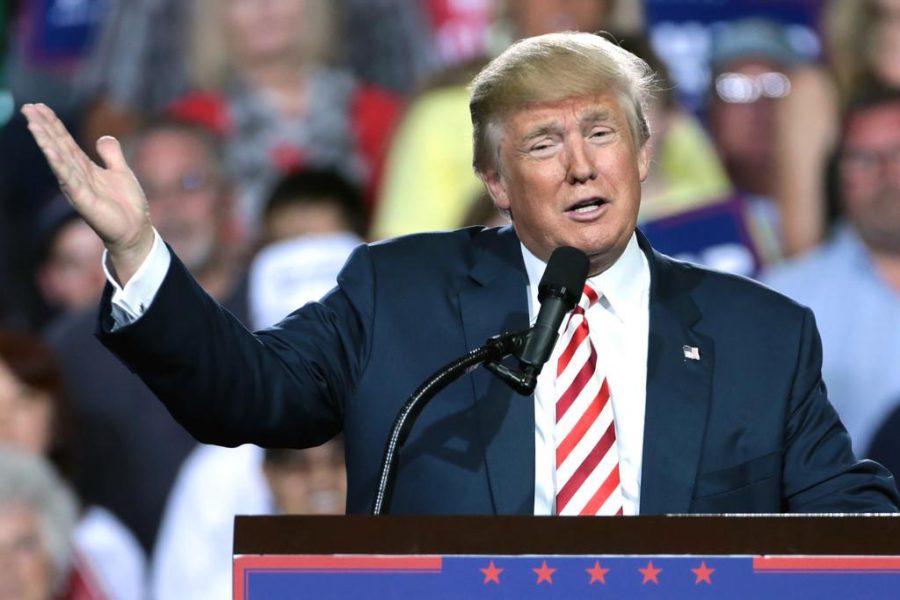Story by Matthew Parks, Staff writer
On his first day of office, President Donald Trump signed an executive order rolling back and limiting the power of Former President Barack Obama’s Affordable Care Act by ordering the health secretary to limit “the maximum extent permitted by the law” and the “financial burden” the act creates on the state.
The order reads that the secretary “shall exercise all authority and discretion available to them to waive, defer, grant exemptions from, or delay the implementation of any provision or requirement of the [Affordable Care Act] that would impose a financial burden on any State or a cost, fee, tax, penalty, or regulatory burden on individuals, families, healthcare providers…”
Robert Lazewski, president of the consulting firm Health Policy and Strategy Associates, said that while this order does not repeal the Affordable Care Act, its loose language and broad spread gives officials the capacity to “loophole” their way out of its provisions full power to do so. He called the executive order a “bomb” thrown into the healthcare infrastructure, which is already fragile from an abundance of recent changes.
Trump has also released an executive order reinstating what is known as the ‘Mexico City Policy,’ originally instituted by the Reagan Administration. This order prevents any international nongovernmental organization from receiving federal funding from the United States if they offer abortion-related services or promote those services.
This order brought in swift and widespread criticism; the president of NARAL Pro-Choice America, Ilyse Hogue, said “Donald Trump has turned his anti-women rhetoric into policy and made it more difficult for women and families all over the world to access vital reproductive care. He really is living up to the lowest of expectations.”
In another executive order Trump announced the United States will be leaving the Trans-Pacific Partnership.
Trump and his officials argue that international free trade deals are “lopsided” against the United States, and have adopted the slogan “America First” in regards to these negotiations.
The Trans-Pacific Partnership was negotiated by the Obama Administration (but had yet to be ratified by Congress) and would have created a trade agreement between 12 nations representing 40 percent of the world economy by reducing tariffs and encouraging trade between the nations in an attempt to foster growth.
However, after Trump’s executive order, that deal will now continue without the United States, and as U.S. participation was a major part of the partnership, it will likely have to be re-negotiated in order to continue, said Michael Froman, a trade representative who negotiated the partnership for Obama.
While the United States has taken steps back from global trade policies with this measure, the president of China, Xi Jinping, attended the World Economic Forum last week where he spoke to the benefits of globalization and indicated that China would take the lead in developing that global market.
China was not involved in the Trans-Pacific Partnership, as they are involved in their own global trade partnership that includes 15 countries known as the Regional Comprehensive Economic Partnership. The U.S. International Trade Commission released a statement saying the United States will be left out of developing rules for global trade, and a majority of international trade will likely be directed away from the US, because Trump ended the Trans-Pacific Partnership.
In a more standard move, Reince Priebus, White House chief of staff, released a memorandum on Friday to all departments and agencies to freeze new or pending regulations – this move allows the incoming administration to review pending policies and happens almost every time the White House changes party control.
In his inaugural address, Trump unknowingly quoted the villain Bane from the film The Dark Knight Rises, stating he would strip power from Washington and give it “back to the people.” Videos comparing the two flooded the internet within hours of the address.
White House Spokesman Sean Spicer originally claimed that 1.5 million people attended the inauguration, when pictures, videos and statistics from the D.C. metro showed otherwise. When accused of presenting inaccurate information, Spicer defended his claim.
Spicer gave a statement on Saturday accusing the media of contriving pictures to minimize the attendance of Trump’s inauguration.
“This was the largest audience to ever witness an inauguration,” Spicer said. “Period – both in person and around the globe.”
Kellyanne Conway, Trump’s White House counselor, appeared on NBC’s Meet the Press to defend the inauguration, where she infamously coined the term “alternative facts.”
Most recently, Trump signed an executive order that would all but clear the way for the controversial Keystone XL Pipeline. He also has signed off on building a wall across the U.S.’s southern border and ordered a temporary halt to all refugees coming into the country.
Follow us for more coverage of Trump’s first 100 days in office.


























































































